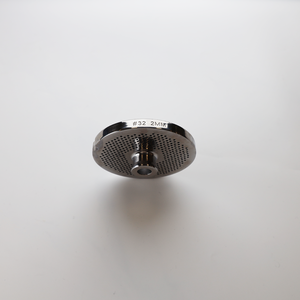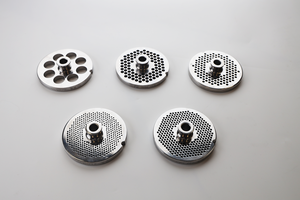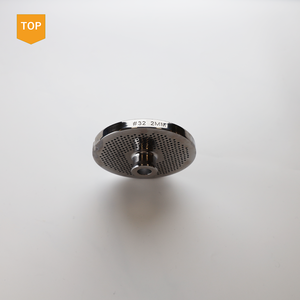
All categories
Featured selections
Trade Assurance
Buyer Central
Help Center
Get the app
Become a supplier

(3053 products available)













![[DELICO] DELICO CK48 Coffee Been Grinder 48mm Stainless Steel Burr Aluminum CNC The Best Selling Good Item](http://s.alicdn.com/@sc04/kf/A229545b529184dc79683b82d8135aba9i.jpg_300x300.jpg)
![[DELICO] DELICO CK48 Coffee Been Grinder 48mm Stainless Steel Burr Aluminum CNC The Best Selling Good Item](http://s.alicdn.com/@sc04/kf/A4e530577b8364cc7984b3674066dd8c99.jpg_300x300.jpg)
![[DELICO] DELICO CK48 Coffee Been Grinder 48mm Stainless Steel Burr Aluminum CNC The Best Selling Good Item](http://s.alicdn.com/@sc04/kf/Ab76260d409b44a6cb8f73fb7e527e855A.jpg_300x300.jpg)
![[DELICO] DELICO CK48 Coffee Been Grinder 48mm Stainless Steel Burr Aluminum CNC The Best Selling Good Item](http://s.alicdn.com/@sc04/kf/A18fbf95f965748999edec08e3e5c7b892.jpg_300x300.jpg)
![[DELICO] DELICO CK48 Coffee Been Grinder 48mm Stainless Steel Burr Aluminum CNC The Best Selling Good Item](http://s.alicdn.com/@sc04/kf/A37fcc711c01a4287ae69c40d3add0180L.jpg_300x300.jpg)
![[DELICO] DELICO CK48 Coffee Been Grinder 48mm Stainless Steel Burr Aluminum CNC The Best Selling Good Item](http://s.alicdn.com/@sc04/kf/A07ff030d70c043a9ab10f12cfdd2fa84i.jpg_300x300.jpg)

Disk mills are food processing machines that use discs as their main grinding elements to crush, shred, and grind solid foods. They can either be air classifier mills or hammer disc mills. Air classifier disc mills use two discs positioned parallel to each other. One disc will be stationary, while the other one rotates at a very high speed. The food will be fed from the top of the mill and will be subjected to the high tangential forces between the two discs, which will then result in the air classifier disc grounding the feed into fine particles. This type of disc mill is usually used in the chemical and pharmaceutical industries, where the raw material needs to be grounded into ultra-fine powder.
A hammer disc mill has hammers attached to a disc that is used to strike the material being processed. This disc is usually powered by an electric motor. When the raw food material strikes the hammers, they break the material down into smaller chunks. Some hammer disc mills come with sieves. Once the ground material passes through the hammers and is sieved, the large chunks are struck by the hammer again. They will go back to the disc mill for a second-round processing. This will produce a more coarse final product. This type of disc mill is mostly used for making flour from grains and coffee from coffee beans.
Besides the working principle, disc mills can also be differentiated by their material of construction. Some disc rider mills have discs made of stainless steel, while others will have aluminum discs. Stainless steel disc materials are durable and impact-resistant. They can withstand heavy use and will not chip or break easily. On the other hand, aluminum disc mills are lightweight, which makes it easy to install and operate the mills. They are also easy to clean and maintain, which is important in food processing industries.
Disc mills are also differentiated based on their capacity. Some heavy-duty disc mills can produce about 15000 kg/ hr, while others can only pounds 500 kg/hr. High-capacity disc mills are suitable for use in warehouses and large processing industries that have high input requirements. Small-capacity disc mills can be used in households or small-scale processing industries.
Disk mills are useful in many industries that need to grind food or create chemical products. They work well for things that aren't too hard and make a fine powder. Some industries that use disk mills include the following:
Business buyers are advised to carefully consider a number of key factors when selecting suitable disk mills for their unique business requirements. First and foremost, discerning the type of materials the intended disk mill will be processing is crucial. Is it to be the disk mill instilled in a food processing plant, an animal food production factory, a pharmacy, or a restaurant? Knowing what kind of material ought to be processed helps determine the suitable disk mill intended for use.
The next thing to look at is the production capacity and size of the disk mill. This refers to how well the disk mill can handle the expected daily workload and its physical dimensions. This is very important when considering induction disk mills for large-scale processing to meet high production demands. Induction disk mills with higher capacities and larger sizes have proven to be effective in handling heavy-duty tasks and swiftly processing large volumes of materials.
Maintenance requirements are also to be considered, as it cannot be overlooked. Keeping the machine in a good state and ensuring optimal performance purposefully calls for frequent maintenance. Choosing a disk mill that is easy and convenient to maintain is a decision that proves to be useful in the long run.
Also, buyers are urged to consider the compatibility of accessories and attachments that the disk mill may have to use in conjunction with it at some point. These accessories and attachments may include feeding systems, filtration units, and exchangeable plates. The disk mill stage will eventually make processing easier and more efficient when the available accessories are easy to find. They are also readily compatible with the disk mills used.
Last but not least, the required safety features of disk mills will vary according to where the disks are placed and what type of safety concerns arise. It is necessary to prioritize safety features such as overload protection, emergency stop buttons, and safety guards. Considering these have been helpful in selecting disk mills that are in line with particular safety requirements for specific operational environments.
Q1: What are the advantages of disk mills?
A1: Disk mills offer several advantages to manufacturers. They produce fine and homogeneous products, ensuring consistent quality in the final output. They also have the ability to handle a wide range of materials, making them versatile tools for various applications. Furthermore, disk mills can process large volumes of material rapidly, increasing production efficiency.
Q2: Can disk mills be used for both wet and dry milling?
A2: Yes, disk mills are adaptable and can be used for both wet and dry milling procedures. They can handle dry materials and dumplings, slurries, or suspensions containing solid particles cracking them into smaller particles or breaking them into their constituents.
Q3: Are disk mills easy to maintain and clean?
A3: Disk mills are generally straightforward to clean and maintain. Regular cleaning and maintenance is crucial because it prevents cross-contamination between batches and guarantees consistent product quality. Nonetheless, the precise cleaning and maintenance techniques may change based on the mill's design, construction materials, and specific operating instructions.